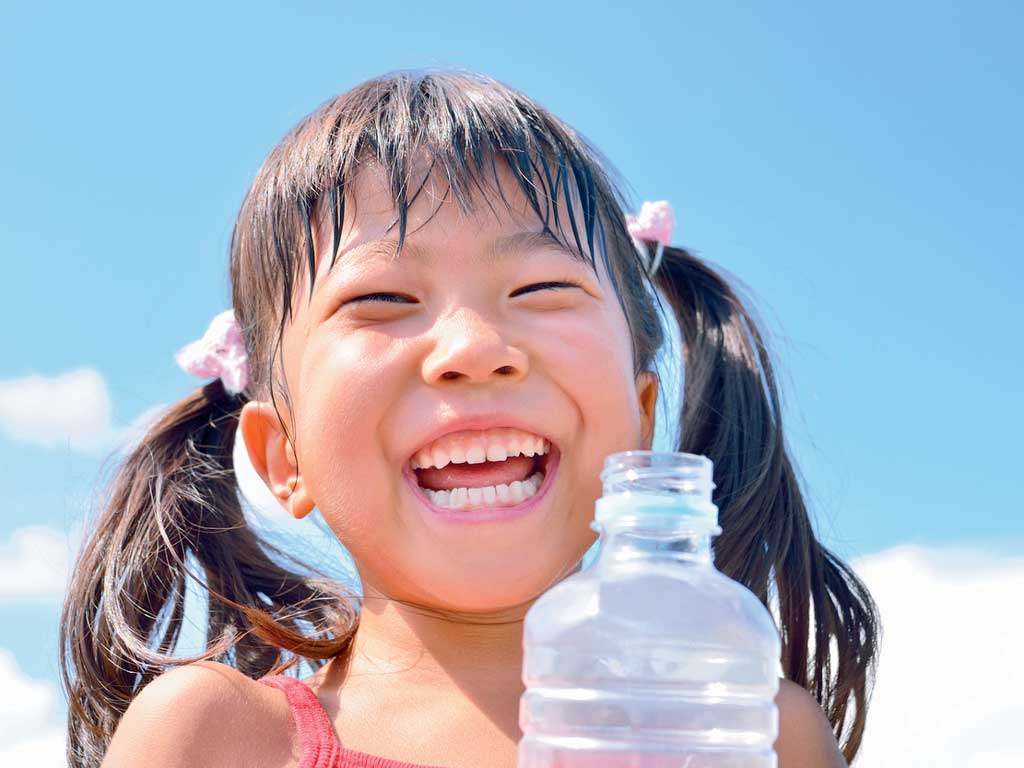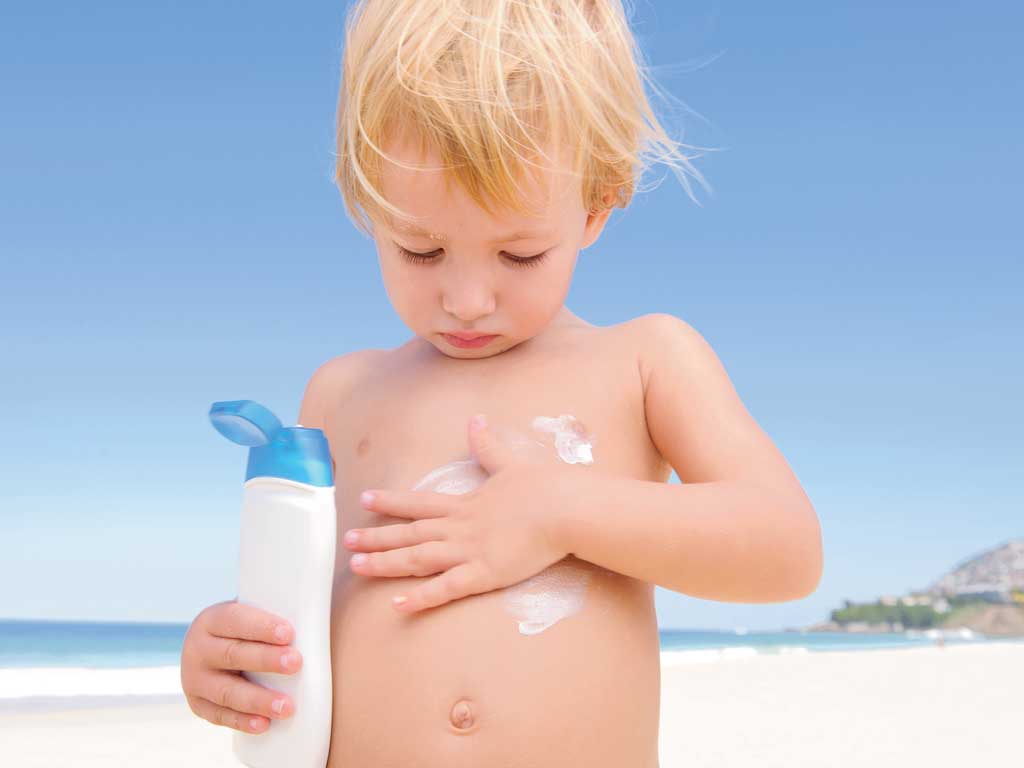by Jamie Lober
“What you do for your child’s health now will stay with them for the rest of their life.”
As temperatures begin to climb, it is a good idea to sit down as a family and talk about how you plan to protect yourselves as you have fun outdoors. “If there is one message to get out there it is about prevention – rather than treatment – and reaction to things like sunburn or near drowning. We want to do everything we can to be water safe and sun safe,” said Dr. Rachel Coel, medical director and staff physician at the Queen’s Center for Sports Medicine. Taking precautions should start in infancy. “With the sun, most of the harmful lifetime exposure is within the first 20 years of life, so the point we want to drive home is that what you do now for your child is really important for their health and safety years later,” said Coel. The tips may seem obvious but when overlooked have great ramifications.
Sun Safety
Do not go anywhere without sunscreen that has a sun protection factor of greater than 30. “Children under 6-months of age have much more sensitive skin so exposing them to sun is not recommended and they should be well-covered and in the shade or under an umbrella and not just lying out at their older brother’s soccer game,” said Coel. Reapplying regularly is key because within 30 minutes to an hour in the water your sunscreen will wear off. It is important that you give your skin time to absorb it so it is suggested to apply 30 minutes before your outdoor activity. “The shoulders, nose and cheeks tend to rub off the fastest and then there are places people tend to forget like the feet, ears and backs of the hands,” said Coel. Every inch counts. “A lot of skin cancers occur later in life along the hairlines because especially in Hawaii with all our swimming it gets brushed back or pulled back when wet and skin gets exposed, so when you do your forehead use your fingertips to get into the hair and edges of the hair,” said Coel.
Sun-protective clothing is another great accessory. “Even Dri-FIT or cotton clothing will do the trick so you can wear a shirt with sleeves or even short sleeves as opposed to a tank top to get more coverage,” said Coel. Fashionable sunglasses always come in handy. Of course, you should strive to take your child to the park in the earlier hours or later hours of the day in order to avoid the sun’s hottest rays. “Between 10 am and 2 pm are the worst, but even on a rainy or cloudy day there are still UV rays coming through,” said Coel.
Caring for Sunburns
For first degree burns there is not a lot you can do. “There are myths that are not advised like rubbing butter, oil or Vaseline all of which can prevent the skin from breathing well; just simply use aloe which you can find in plants in your yard or buy at the store,” said Coel. Anti-inflammatory medicine like ibuprofen can control pain and discomfort as well as a cool bath. “Kids should be drinking extra water than normal when they get a sunburn because they lose more water out of that damaged skin,” said Coel.

Water Safety
“If I could put the message in caps it would be supervision because it is hard for something terrible to happen if supervised by a competent swimmer,” said Coel. This would be a mature adult who knows better than to leave the kids alone. Even taking a split second to answer the door or a phone call can become a high risk moment. “If you are having a pool party a neat little trick is the person supervising should hold some kind of symbolic instrument like a foam noodle or inflatable ring which means they are in charge and if someone else becomes in charge it needs to be handed to them so that person is obvious,” said Coel. A high fence is another excellent means of drowning prevention. “Kids at a minimum of age 4 should start swim lessons,” said Coel.
Know Your Surroundings
Always be alert and familiarize yourself with the area. “A very simple important concept that I cannot emphasize enough as far as spinal cord safety is knowing the depths of the water before diving, and diving should never be allowed in the shallow end of a pool,” said Coel. Depths definitely need to be tested before any diving or cliff jumping, so you may want to have a professional come out. “In the ocean, you want to know your limits and how capable you really are in terms of open water.
You need to know if you are able to swim in that size wave without taking chances,” said Coel. If you are learning to surf you should have a lifejacket on and be a capable swimmer. Remember that every child is different in terms of heat sensitivity and ability to engage in outdoor activities but as we enter the hottest times of year, safety should always come first.





